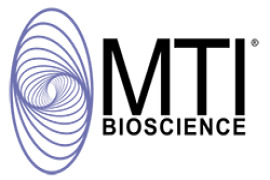A next generation, pilot-scale continuous sterilization system for fermentation media

Continuous sterilization system for fermentation media
Junker, B., Lester, M., Brix, T., Wong, D., & Nuechterlein, J. (2006). A next generation, pilot-scale continuous sterilization system for fermentation media. Bioprocess And Biosystems Engineering, 28(6),
Abstract: A new continuous sterilization system was designed, constructed, started up, and qualified for media sterilization for secondary metabolite cultivations, bioconversions, and enzyme production. An existing Honeywell Total Distributed Control3000-based control system was extended using redundant High performance Process Manager controllers for98 I/O (input/output) points. This new equipment was...plant, designed and constructed in the early 1980s.Design strategies of this new continuous sterilizer system and the expanded control system are described and compared with the literature (including dairy and biowaste inactivation applications) and the weaknesses of the prior installation for expected effectiveness. In addition, the reasoning behind selection of some of these improved features has been incorporated. Examples of enhancements adopted include sanitary heat exchanger(HEX) design, incorporation of a ‘‘flash’’ cooling HEX, on-line calculation of Fo and Ro, and use of field I/O modules located near the vessel to permit low-cost addition of new instrumentation. Sterilizer performance also was characterized over the expected range of operating conditions. Differences between design and observed temperature, pressure, and other profiles were quantified and investigated.
Advantages
Advantages of continuous sterilization have been outlined in several reports [3, 7, 10, 30, 60, 84]. By far the most noted benefit is energy conservation since continuous sterilization consumes up to 60–80% less steam and cooling water for large-scale fermenter media volumes. This economy lies at the high end of this range when continuous sterilization utilizes heat recovery via indirect heat exchange to pre-heat incoming cold medium with hot medium leaving the sterilization hold loop. It thus requires less energy (as well as generates a more uniform demand without peak draws [7]); than the alternative batch sterilization process involving sterilizing the fermenter vessel and its non-sterile contents together.
Batch sterilization becomes less efficient with scale since heating and cooling portions of the cycle are longer than the constant hold temperature portion [54,83], and heat transfer coefficients decrease with scale up[34]. Prior to receiving continuously sterilized medium, the fermenter is sterilized empty or with a small volume of water covering the pH and dissolved oxygen probes. Heat up/cool down times are substantially shorter, decreasing overall turn-around time [96].Continuous sterilization results in gentler treatment of medium compared to batch sterilization, which tends to overheat medium to ensure that vapor space vessel internals achieve sterilization temperatures [1]. Sterilization at higher temperatures for a shorter time generates less degradation of heat-sensitive medium components since spore destruction rates increase fasterthan nutrient destruction rates as temperature rises [15].The activation energy for nutrient degradation ranges from 50 to 150 kJ/mol, which typically is smaller than activation energies for the thermal death of microorganisms, which range from 250 to 350 kJ/mol [67].Consequently For increases more than Ro as temperature rises [1, 52]. Similarly, amino carbonyl or reactions, which form objectionable color and tastes to consumers for pasteurization and adversely affect medium quality (destroy growth factors) for fermentation, are minimized [12, 54]. In the case of polymerizedpoly (L-lactide) rod implants, lower molecular weight decreases also have been found for autoclavecycles at higher temperatures and shorter times [88].Continuous sterilization results in more uniform heat treatment of medium than batch processes since the system operates at steady state [15]. Proteins and carbohydrates can be separately sterilized in multiple sections using several mix tanks with a sterile water flush between them [96]. Since there is no need to agitate unaerated (ungassed) large liquid volumes during batch sterilization, fermenter agitator design can be based on drawing full load during gassed conditions [96]. Some feel that continuous sterilization offers a lower contamination rate relative to batch sterilization since fermenter internals are more easily sterilized in an empty rather than full fermenter [96]; others believe that batch sterilization has a lower risk since there is no need to transfer aseptic media [97]. HTST systems have a high degree of flexibility since a large range of time/temperature combinations can be selected within equipment design limits. Scale up is linear with media flowrates of10–100,000 L/h reported for HTST systems [36] and up to 30,000–50,000 L/h for pasteurizers [38]. Time/temperature exposure profiles accurately reflect sterilization conditions for the media of interest and can be readily modeled. Finally, the ability to design heat exchange equipment to minimize fouling reduces cleanability and maintenance concerns. Disadvantages of continuous sterilization primarily are that process control performance is critical since it is necessary to immediately divert flow of any inadequately sterilized medium, halt any further medium sterilization, and resterilize the system. In contrast, for a batch sterilization system upset, often additional hold time can be readily added to the sterilization. Continuous sterilizer systems also use dedicated equipment that usually is not well suited for other purposes.
Position your company at the heart of the global Pharma industry with a CPHI Online membership
-
Your products and solutions visible to thousands of visitors within the largest Pharma marketplace
-
Generate high-quality, engaged leads for your business, all year round
-
Promote your business as the industry’s thought-leader by hosting your reports, brochures and videos within your profile
-
Your company’s profile boosted at all participating CPHI events
-
An easy-to-use platform with a detailed dashboard showing your leads and performance